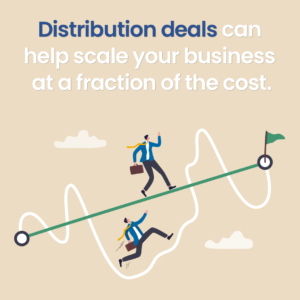
by Dr. Allan Colman, CEO of the Closers Group and author of “The Revenue Accelerator: The 21 Boosters to Launch Your Startup“
Successful sales and marketing require one over-arching element. Your product or service must be seen as a brand. And the brand encompasses your USP, Unique Selling Proposition — the heart of your marketing and sales efforts.
Your USP effectively distinguishes you from competition. It can also be used as a slogan, and can even be expanded into an elevator message. Within a 20-second statement, the benefits of your product/service should be obvious.
At its core, a USP is a written statement that explains why you get new customers/clients, why they keep coming back to you, why they refer new business to you, and how you differ from the competition. It should succinctly capture the essence, strengths, and uniqueness of your product or service.
If you’ve spent any time selling in today’s competitive marketplace, you know it can be uniquely challenging. Many markets are individually idiosyncratic and often resistant. It requires special insights, strategies, and training to successfully penetrate them. This often adds a few twists and turns into your business roadmap but it’s not impossible to navigate with a clear, forceful USP.
When devising your company’s USP, ask whether it positions you as Kleenex or tissue. As plastic storage bags or Ziplocks? Are you known as among the best or simply one of the others?
When the public hears the name of your company or service, what adjectives come to their minds? Building the USP takes time and effort, but it can produce an effective offering of benefits and solutions.
In order to create your USP, look for answers to these questions:
- What is it that makes your company/firm stand out from your competitors?
- Why do your customers/clients continue doing business with you?
- What is it about your company/firm that makes it unique?
- Why should customers/clients come to you?
- What do you have to offer that they can’t get anywhere else?
Offer up these questions to a wide swath of peers and prospects along with friends and family and note any common themes that emerge. And, if you’ve started a business, how do your clients or any “best” customers respond, or your suppliers, vendors, manufactures, local businesses and others you’ve interacted with in your community. If you’re just opening an operation, ask what level of service should be provided, or what future refinements might be considered. Listen very closely to each answer.
Skilled entrepreneurs will ask themselves the very same questions. Have you studied the market before beginning to build or design your product or system? Do you know what might make you stand out from competitors? Is there an element that’s truly unique? Why should customers/clients come to you? Do you have something not available anywhere else?
Combining your answers and being completely, painfully honest, will allow you to come up with the most powerful quality that will set you apart from your competition or future competition. As you narrow down your feedback to a short list of answers, a few simple, focused statements should arise. Share these with key people. Which would they choose?
In asking for feedback from the people who’ve offered responses, you’re not selling; you’re asking for advice. Yet this is an excellent indirect marketing opportunity (invisible marketing).
A short, concise USP should now become visible that will signify the core message for all of your marketing and sales efforts. And, once you have it, and it becomes your brand, protect it vigilantly. In many ways the future of your business depends on it.
It’s now time to put that USP to work. In meetings and pitches, while reviewing your prospects’ needs and stating your offerings and solutions, remember to repeat that USP two to three times, no more. It should become the single-most takeaway message that they remember.
Convert your USP to their reality.










It goes almost without saying that different groups interpret messages differently. Using the correct message channel requires careful preparation. Encoding a clear message is more complicated today because selling your product or service may be of interest to any of the four major generations currently vital and active in our world.
· Baby Boomers: Born between 1946 and 1964, Boomers are a group with significant incomes who are looking for solutions in selecting products and services.
· Gen Xers: Born between 1965 and 1977, Gen X is a smaller group than the Boomers. With their kids no longer their main focus, their tastes for products and services are in flux. Selling to them requires more detailed research on specific needs and concerns.
· Millennials: Born between 1978 and 1994, Millennials are beginning to collect savings and they work well with technology. Concerned with costs, they spend more time analyzing purchasing options and waiting for sales or specials, and they want to see others successfully using a product or service before committing.
· Gen Z: Those born since 1995 think and act online. They are “digital natives” and want to hear from you via text, call, Zoom, etc. As this group matures, they will have a greater impact on the economy and be in control of significant purchasing decisions.
Your product or service will require completely different sales approaches depending on which generation you’re marketing to. You may limit your targeting ultimately to only one or two of these groups. Spend time researching the survey data and demographic details of each group and take special note of their differences. These will impact how you tailor the need and use for your product to them.